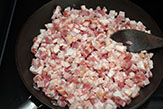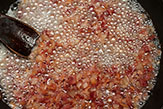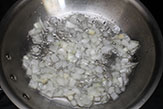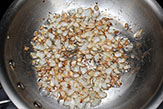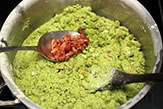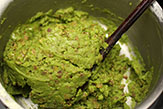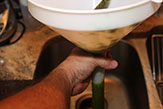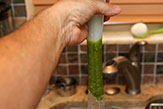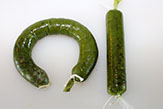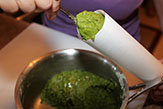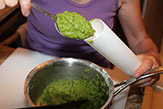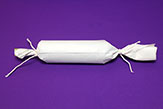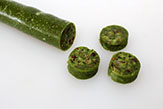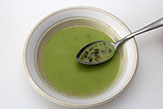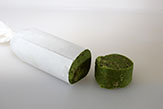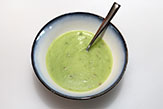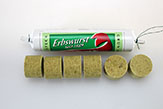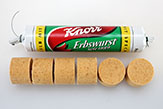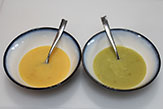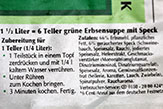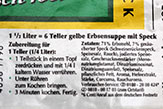Meats and Sausages
Erbswurst
Erbswurst is a German sausage made from pea flour, pork belly, beef or pork fat, onions, salt, and spices. Homemade Erbwurst sausage can be sliced and eaten as a snack or dissolved in hot water to make a nutritious and rich-in-calorie pea soup. The product has an almost unlimited shelf life; it is cheap to make and easy to prepare. The Erbwurst is a survival food sausage and has been popular with hikers and expeditions. It is somewhat related to Indian Pemmican as both products contain a large amount of fat, and the manufacturing process is similar. The difference is that Pemmican uses powdered dry meat instead of pea flour. Both products are perfect survival food.
History
The Erbwurst was invented in 1867 in Berlin by Johann Heinrich Grüneberg who was a cook and food canner. His invention was immediately purchased by the Prussian Army, which introduced the product as the main meal for the soldiers. When the war between France and Prussia broke out in 1870, the factories produced thousands of pounds of Erbswurst daily. Since 1889 the Knorr company has been manufacturing Knorr Erbswurst, and the sausage is still being sold in Germany. It may be considered to be the first instant soup in history.
Homemade Erbswurst
If you are a hiker or a member of an expedition and need good-tasting survival food, make yourself Erbswurst. You decide what ingredients go in to control the sausage's nutritional and caloric value. Let's say you embark on the Appalachian Trail that starts in Georgia and ends in Maine. If you keep walking for 8 hours daily, you may complete the journey in six months. This is where homemade Erbswurst starts to shine because it contains a large amount of fat. The fat gives you the power, the energy you need when walking for six months on the Appalachian Trail. One gram of fat provides nine calories; this cannot be matched by protein, flour, sugar, or alcohol.
Homemade Erbswurst tastes great and has the right texture. It can be cut and keep its shape; it will not crumble. Pea flour is dry, but the fat makes up for it and provides a pleasant mouthfeel. Our tongue loves fat-rich foods such as chocolate, ice cream, cakes, mayonnaise, cream cheese, butter, etc. Remove fat, and you are stuck with a pile of bread crumbs like a lean hamburger. Grill a fatty ground beef, and all will agree that the hamburger is juicy.
Erbswurst Sausage
- Fresh pork belly or smoked bacon | 350 g | 0.77 lb
- Hard fat | 250 g | 0.55 lb
- Pea flour | 400 g | 0.88 lb
- Salt | 18 g | 3 tsp
- Pepper | 2.0 g | 1 tsp
- Marjoram | 1.0 g | 1/2 tsp
- Nutmeg | 0.3 g | 1/4 tsp
- Thyme | 0.3 g | 1/4 tsp
- Onion | 30 g | 1/2 onion
Instructions
1. Dice bacon and fat trimmings.
Bacon becomes brown when overcooked and this will result in a bitter taste. Cook on low heat, don't allow the bacon to smoke.
2. Chop onions finely. Fry onions in some fat until golden. Don't make them dark brown as they will taste bitter.
3. Heat up a pot on low fire and start adding pea flour stirring continuously. This removes any remaining moisture and will inhibit any bacteria from growing. Add all spices, and keep on stirring.
4. Stuff into casing.
Butcher or waxed paper works great with this type of sausage. keep in mind that the paste is pliable only when warm, when it cools down it hardens.
Stuff firmly into 40 mm casings making 8" (20 cm) straight links. There is no need for cooking. Erbswurst sausage will harden soon but you will be able to cut it with a knife. Homemade Erbswurstcan be kept indefinitely in a refrigerator and can be eaten at any time or made into a pea soup. 100 g (3.5 oz) of homemade Erbswurst mixed with 750 ml (3 cups) will make a delicious pea soup.
Knorr Erbswurst
Knorr is a German beverage and food company that produces excellent instant soups. It was founded in 1838 by Carl Heinrich Theodor Knorr and Knorr's headquarters are in Heilbronn, Germany.
Since 1889 Knorr has been producing Erbswurst Sausage, which might be considered the first instant pea soup.
Knorr Erbswurst comes in green or yellow color, depending on whether green or yellow peas are used. There are 6 pre-cut portions each weighing 22.5 g (0.70 oz). Each portion (disc) is combined with 250 ml (1 cup) of water to make pea soup. Knorr Erbswurst contains 6-7% smoked bacon and 66-71% pea flour. This amount of flour makes it very crumbly and hard to cut so its value as a snack is limited. It is better suited for making pea soup. There are many additives, for example, MSG (monosodium glutamate) and spices.
Making Smoked Bacon
(optional)
- Ingredients for 1 kg (2.2 lb) of fresh pork belly
- Salt, 24 g (4 tsp)
- Cure #1, 2 g (3/4 tsp)
Mix cure 1 with salt and rub into a slab of bacon on all sides. Place in refrigerator for 4 days. Rinse briefly and pat dry with a paper towel. Apply smoke for 2 hours.
If smoked bacon is used decrease the amount of salt in the recipe to 12 g (2 tsp).



